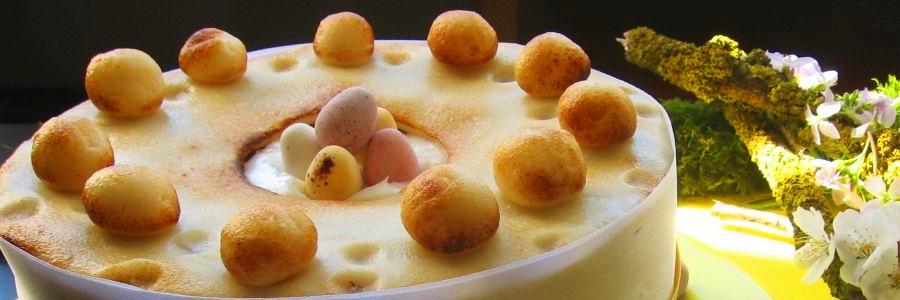CHICKEN ARMADILLO FILLED WITH HAGGIS AND BLACK PUDDING
30 mins to prepare and 30 mins to cook
chicken breast, with skin
450g - meat-free haggis
170g - black pudding
8 rashers - streaky bacon
black pepper, freshly ground
- Preheat the oven to 200°C / gas mark 6.
- Carefully slice the breast lengthwise and lay it flat. Do not cut in half completely.
- Place some meat-free haggis inside each piece of chicken, then close the breast again.
- Gently seperate the skin from the breast meat using your fingers. Push some of the black pudding into the space you have made between the skin and the flesh of the chicken.
- To hold the two stuffing’s in place during the cooking, wrap the breast with rashers of bacon slightly overlapping to give an armadillo effect"."
- Season the chicken breasts and put them into a roasting tin onto the middle shelf of the oven, and cook for about 25-30 minutes until the chicken is completely cooked.
What
is Haggis?
Haggis is a specialty from the Scottish Kitchen and contains lamb and beef that is cooked before being combined
with a unique mix of oatmeal, onions, pepper and spices. This is then packed
into a traditional or clear casing, after which the whole thing is cooked once
again, before being vacuum packed and dispatched to retailers throughout the UK and Ireland.
The vegetarian haggis is made in the same
way, without the meat, but with lots of kidney beans, lentils, root vegetables,
and cereals, all packed into a clear casing.
The
name 'haggis' is probably Scandinavian in origin - the Swedish 'hugga' and the
Icelandic 'hoggva', mean to cut or chop.
The connections between Scotland
and Scandinavia between the 9th and 15th centuries were especially strong, and it
seems likely that haggis could have become established in Scotland
during this period.
**********************
HUHN ARMADILLO GEFÜLLT MIT BLUTWURST
UND HAGGIS
30 Minuten Vorbereitung
und 30 Minuten Bratzeit
Hähnchenbrust, mit Haut
450g - fleischlose Haggis
170g - Blutwurst
8 Speckscheiben - Bauchspeck
schwarzer Pfeffer, frisch gemahlen.
- Den Backofen auf 200°C vorheizen.
- Die Hähnchenbrust flach auf ein Schneidebrett legen und vorsichtig längs einschneiden, nicht vollständig durchneiden (Schmetterling).
- Einige Scheiben fleischlose Haggis in jedem Stück Huhn legen und die Brust wieder zuklappen.
- Die Haut von der Brust mit den Fingern vom Fleisch trennen. Dann etwas von der Blutwurst in den Zwischenraum von der Haut und Fleisch drücken.
- Um die beiden Füllungen beim braten zusammen zuhalten, wickelt ihr die Brust mit Speckscheiben leicht überlappend ein, das nennt sich dann „Armadillo-Effekt“ (Gürteltier-Effekt).
- Die Hähnchenbrust würzen und in einen Bräter auf der mittleren Schiene des Ofens, für ca. 25-30 Minuten braten.
Was ist Haggis?
Haggis ist eine Spezialität aus der Schottischen Küche und enthält Lamm-und Rindfleisch das mit einer einzigartigen Mischung aus Haferflocken, Zwiebeln, Pfeffer und Gewürzen kombiniert und gekocht wird. Dieses wird dann in einem natur Darm verpackt und gekocht, bevor es Vakuum verpackt in den Einzelhandel in ganz Großbritannien und Irland verkauft wird.
Die vegetarische Haggis Variante wird in der gleichen Weise, ohne Fleisch aber mit viel Bohnen, Linsen, Wurzelgemüse und Getreide verpackt.
Haggis ist eine Spezialität aus der Schottischen Küche und enthält Lamm-und Rindfleisch das mit einer einzigartigen Mischung aus Haferflocken, Zwiebeln, Pfeffer und Gewürzen kombiniert und gekocht wird. Dieses wird dann in einem natur Darm verpackt und gekocht, bevor es Vakuum verpackt in den Einzelhandel in ganz Großbritannien und Irland verkauft wird.
Die vegetarische Haggis Variante wird in der gleichen Weise, ohne Fleisch aber mit viel Bohnen, Linsen, Wurzelgemüse und Getreide verpackt.
Der Name "Haggis" ist wahrscheinlich
skandinavischen Ursprungs - der schwedischen 'hugga' und die isländische 'hoggva',
was soviel bedeutet, zu schneiden oder
klein hacken.
Die Verbindungen zwischen Schottland und Skandinavien zwischen dem
9. und 15. Jahrhundert waren
besonders stark und
wahrscheinlich hatte Haggis sich in
dieser Zeit in Schottland etabliert.





























